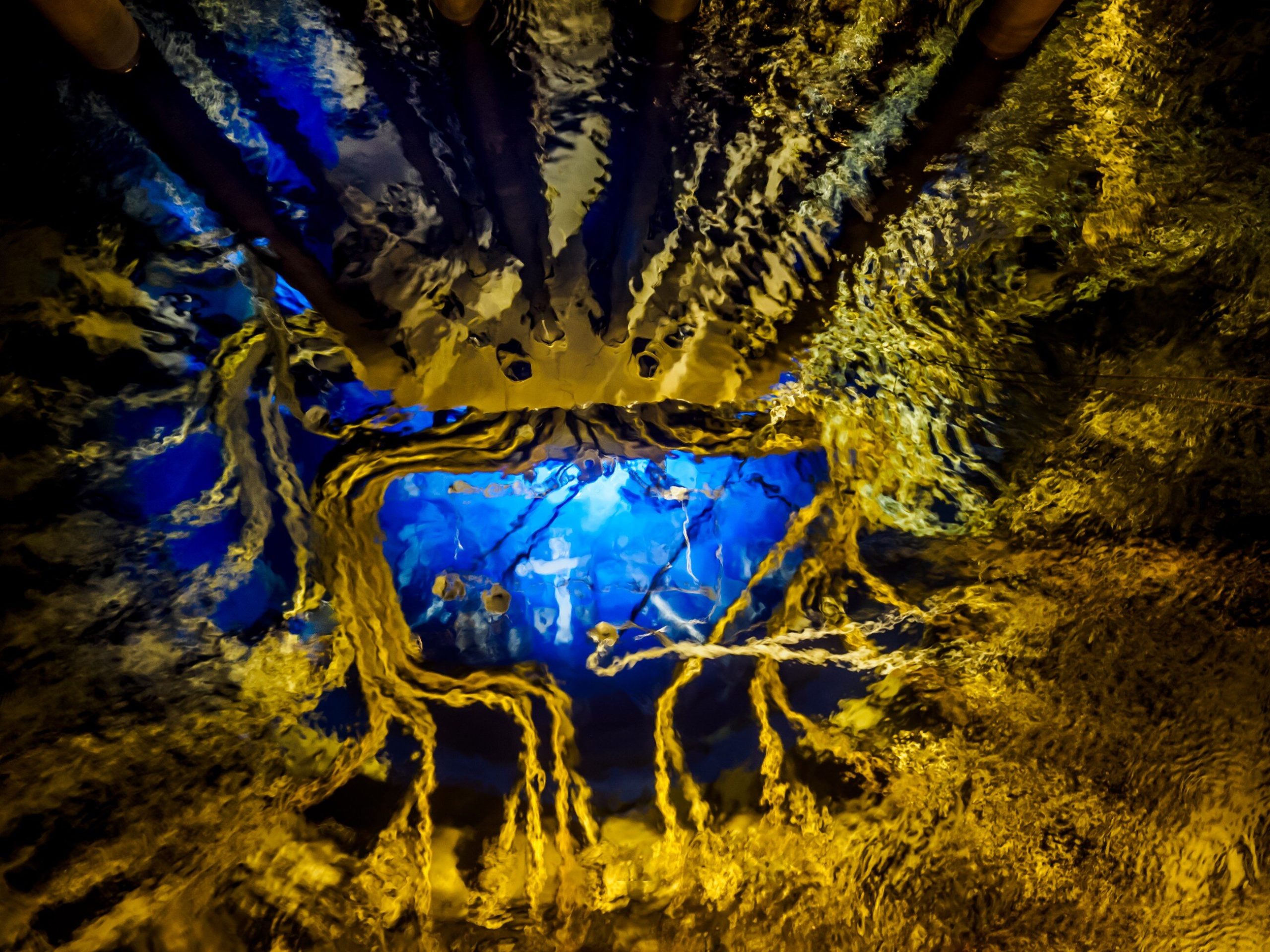Not only the MARIA reactor. This is how the National Center for Nuclear Research works

The National Center for Nuclear Research is the largest research institute in Poland – We are particularly proud of the scientific research that is conducted at NCBJ at a very high level – says “Wprost”, the director of the Center, Prof. Krzysztof Kurek.
The National Center for Nuclear Research is located in Otwock in the Świerk district. It is the largest research institute in Poland and, due to the specific nature of its research, it is closely guarded against access by unauthorized persons.
NCBJ is not only the MARIA reactor…
– The National Center for Nuclear Research covers over 40 hectares and employs approximately 1,200 people, including many scientists, including approximately 70 researchers with the title of professor or habilitated doctor, and over 200 doctors. Every year we publish at least 500 scientific articles in international journals – says prof. Agnieszka Pollo, deputy director of the National Center for Nuclear Research for scientific affairs.
One of the symbols of NCBJ is the only MARIA nuclear research reactor operating in Poland, which serves many purposes.
– Its practical application, which constitutes a large area of activity, is the production of radiopharmaceuticals. If any of you have ever used nuclear medicine services, for example for oncological treatment, it is very likely that they used drugs that contained radioisotopes produced in our reactor – says Prof. Pollo.
– The Maria reactor was built in the 1970s as a research reactor for material testing. Currently, it is used mainly for the production of radiopharmaceuticals – says Prof. Jacek Jagielski, Director of the Department of Materials Physics – It is worth mentioning that a week of radiation on Maria means several hundred thousand medical procedures. This is of enormous importance for the health of citizens. The reactor is also used to irradiate materials that can be used in a nuclear installation, he adds.
…but many different laboratories and plants
– But this is not the only field of activity of NCBJ – emphasizes prof. Pollo. –It is a large structure and a large area of scientific research that overlap. They cover the area from basic research to very advanced applied research. Basic research is the study of how the universe works. This is research without direct applications conducted, for example, in the field of physics and astrophysics, regarding, among others, what elementary particles look like and what laws govern them, what atomic nuclei look like. This is research on gravitational waves, research on distant galaxies and their structures. Research into how the universe was created and why it is the way it is – explains the deputy director of NCBJ.
In the center, apart from the reactor, there are numerous laboratories. – Among others, a laboratory dealing with materials research, a laboratory dealing with the production of accelerators, the production of various types of detectors, and a plant producing radiopharmaceuticals. We also have a supercomputing center, which is one of the largest such centers in Poland with very modern equipment and serves scientists from our institute – says Prof. Pollo.
One of the important laboratories that we visited during our visit to NCBJ as part of the “Science is a Polish specialty” series is the Materials Research Laboratory.
– We are currently conducting some interesting research – says prof. Jacek Jagielski. – One of the most interesting topics is high entropy rates. This is a new category of materials, a completely new paradigm when it comes to materials research. The alloys used so far were basically iron with some admixtures. High entropy alloys are 5 components in approximately equal proportions. This gives great opportunities to shape their properties. They can be resistant to corrosion, high temperatures and radiation. The second interesting topic, which I hope will be launched soon, is a joint project with South Korea regarding a new generation of nuclear reactors. This is the so-called accident-proof fuel. In short, the point is to ensure that something like what happened in Fukushima cannot happen again, he adds.
Another place we visited was the Department of Particle Acceleration Physics and Technology.
– This is a quite unique group that deals with building new devices that produce ionizing radiation and detection devices for their detection. We are a company dealing primarily with applied physics. Not theoretical, but one that turns into ready-made devices that serve society – says the head of the plant, Prof. Sławomir Wronka.
The scientist graphically explained what his department does as part of the National Center for Nuclear Research.
– Construction of industrial infrastructure, systems, elements, systems such as turbines, connections, pipes, welded joints, basically the entire industrial infrastructure requires quality testing. That is, we need to check whether the parameters of these devices required for their operation are met and whether safety aspects are ensured. For example, whether the elements of a power plant, whether a classic one or especially a nuclear power plant, will be safe for operators and bystanders, Wronka said.
– Non-destructive testing is testing that does not damage the controlled elements. One such method is X-ray examination, which involves taking an x-ray. When we go to the doctor, we can check whether we do not have a broken arm, leg, damaged skull, or any foreign body in the body. Similarly, we can perform an X-ray to check whether a given industrial element or object has any cracks or corrosion inside, whether it is safe to use, and whether there is any damage that could pose a threat – explained the scientist. – At NCBJ, we design, service and provide all types of support for devices such as linear electron accelerators. It produces X-ray energy approximately one hundred times greater than a classic X-ray tube. This allows for x-raying, for example, 30 cm of solid steel or correspondingly larger elements composed of other substances. We are able to x-ray an entire truck or an entire railway car to see what is inside. Thanks to this, we can check at the border what is being imported into the country and whether it is safe. We can check whether the goods comply with what is declared, he points out.
The system developed for screening large-sized cargo at borders is CANIS.
– CANIS is a system for border control of large-sized objects based on a switched energy accelerator, detection system, control system and organization of all systems in such a way that they operate effectively. Thanks to this, we can obtain color images, just like at airports where baggage is checked. This image indicates organic and inorganic materials, explains the scientist. – We have two patents for this. We are proud that we have reached world level – he adds.
Director of NCBJ: We are proud of our scientific research
The Materials Research Laboratory and the Department of Particle Acceleration Physics and Technology are, of course, only two of several dozen laboratories and plants operating within the National Center for Nuclear Research.
– We are particularly proud of the scientific research that is conducted at NCBJ at a very high level – says Prof. Krzysztof Kurek, director of NCBJ. – We are proud of the production of radiopharmaceuticals, which is our core commercial activity, and currently of rebuilding our competences in the field of nuclear energy – he mentions.
The Center’s director indicates one more research project worth special attention. – The Institute is currently also implementing a large infrastructure project of the Polish free electron laser (PolFEL). This is a device that is to be absolutely unique in Poland and built using the latest superconducting technology – he points out. – The principle of operation of this laser is that a superconducting accelerator will produce an electron beam, which will then produce a very high-power laser pulse. This device can be used in many fields. It can be used for material research in the terahertz range, but its role may also be useful in research on materials needed for nuclear energy, but not only. It is a device that can also be used in chemistry and biology, showing how chemical compounds combine with each other. This is a large project that will cost over PLN 200 million and will be unique, also on a European scale – he emphasizes at the end.






